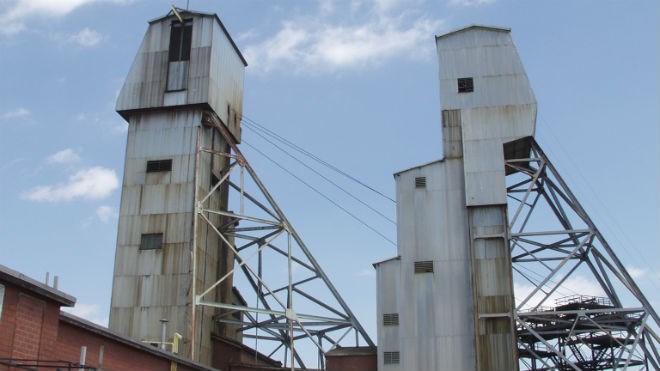There was “a lot of confusion” the night two Vale miners were killed in June 2011, says their colleague who was one of the first to arrive at the scene of the run of muck that took their lives.
John Myles, a Vale miner with 30 years of experience, was working on a jumbo – a large machine used to drill holes to plant explosives underground – on June 8, 2011, the night Jason Chenier, 35, and Jordan Fram, 26, were buried in a 350-tonne run of muck.
Myles spoke as a witness Thursday at the ongoing inquest – meant to determine how Fram and Chenier were killed, and possibly make recommendations to ensure the deadly incident is not repeated.
Myles was not far from the No. 7 ore pass – at the mine's 3,000-foot level – where Chenier and Fram were killed that night.
He heard some chatter on his radio and made his way to the ore pass, where supervisor Luke St. Amant was already in a state of shock.
Myles said he saw Chenier's Jeep – in which he had hitched a ride earlier that evening – parked to the right of the ore pass.
But beyond the Jeep, he said it was a mess.
“I was looking at a run of muck,” Myles said.
The muck, which is made up primarily of water, blasted ore and rock, was soupy in texture, Myles said.
Stobie had trouble with drain holes, meant to ensure water could flow to the mine's lower levels and be pumped out from there, he said.
When Myles arrived at the scene he took control of a nearby scooptram and started to remove large bucket-loads of muck.
By the fourth bucket-load they discovered Chenier's body.
Myles said he did not know at the time that Fram was also buried beneath the muck.
The night of June 7, Myles said he met with Chenier, who he said never raised concern about water in the mine.
Along with fall of rock – when a mine wall or ceiling collapses – Myles said the uncontrolled presence of water is the most dangerous hazard in a mine.
At Stobie, he said, water drainage was treated as seriously as ground support.
David Osinski, a miner who worked at Stobie Mine from 2005 to October 2011, also testified at the inquest Thursday.
Osinski was also working the night of June 8, when Fram and Chenier were killed in a run of muck, but was not at the scene after it happened.
Ryan St. George, who represented the United Steelworkers Local 6500 at the inquest, asked Osinski about his training as a blasting expert.
Osinksi said he received common core training with Inco – which later became Vale – in 2005.
The training included a number of modules on blasting, including courses called blasting awareness and secondary blasting.
He also received some on-the-job training from his peers, but could not recall any training modules after 2005 to improve his skills.
Osinksi also spoke about a process called grouting – when a drill hole is filled with cement to prevent water from seeping in.
He said when he worked in Stobie Mine, some drill holes on the 2,400-foot level were not grouted and there was no set schedule for the process.
The inquest into Chenier and Fram's deaths is expected to continue into next week, with witnesses who will describe how the Stobie Mine's safety situation has improved since the tragic incident.
A five-person jury is tasked to determine how they died, and, if they choose, make recommendations to Ontario's chief coroner to prevent future tragedies in the future.
Join Sudbury.com+
- Messages
- Post a Listing
- Your Listings
- Your Profile
- Your Subscriptions
- Your Likes
- Your Business
- Support Local News
- Payment History
Sudbury.com+ members
Already a +member?
Not a +member?
Sign up for a Sudbury.com+ account for instant access to upcoming contests, local offers, auctions and so much more.
